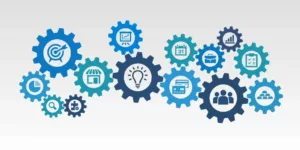For a lot of us, ARM is on a deathwatch largely because of the failed acquisition attempt by NVIDIA. This failed attempt made us aware of ARM’s underlying financial issues that drove it to sue Qualcomm in what appears to be an ill-advised attempt to force Qualcomm to pay more for something that isn’t even successful yet. This desperation and apparent path to ARM’s obsolescence is driving resources to RISC V at what looks like an increasing rate and creating doubt about ARM’s future, making a successful IPO all but impossible to execute. Even if the IPO is executed, the money would flow to the current owner of the firm, not ARM, leaving it with new owners who may not appreciate they invested in a firm on a path to failure. In short, not only is ARM likely to lose its case against Qualcomm, but the litigation is hurting both entities, potentially terminally for ARM because Qualcomm could switch to RISC V if ARM fails.
One of the common questions that analysts are asked is, “how would you fix ARM?” I used to run a field turn-around team at IBM, and I’ve been thinking about this for several weeks now.
Here is my shot at the answer.
Identify the Problem
First, fully flesh out why ARM is so cash-starved. It looks like it is because the firm’s parent has a huge cash problem which is leaving ARM in desperate need of revenue. I think this is what drove the ill-advised decision to sue Qualcomm. It may also be that Apple was paying more and their “most-favored nation’s clause” will, when Qualcomm’s price is disclosed in an internal review, result in ARM getting even less revenue.
But these are the problems from an outside observer perspective. The causes could also include poor expense management, inadequate vendor collections and bad contract practices. That list isn’t inclusive, but an internal review should identify the full extent of the problems, something that will be needed in order to craft an equally comprehensive solution.
Second, depending on what is found, craft a solution to address the cost side of the problem. In other words, reduce the bleeding by eliminating unneeded costs like offices (most employees appear to be working from home) and unnecessary travel (it wasn’t uncommon for me to find employees abusing travel policies).
Third, and in parallel to the item above, create a small skunk works team and send them off-site with solid instructions and a three-month delivery date to propose ways for ARM to utilize its assets, IP and human, to profitably generate more revenue. Recall that AWS, which has been surprisingly successful, spun off an effort to turn IT from a cost to a profit center for Amazon, something that up until then was thought to be impossible.
The team will need members from all the line organizations in the firm, participants from Finance, and someone that knows ARM as an expert on how the company operates on it. It would also be wise to include an operational industry expert from one of ARM’s larger clients (like an ex-Qualcomm employee).
The goal would be to craft a business plan for some additional way to generate profitable revenue using ARM’s existing resources or an alternative that would leverage ARM’s existing customers as a sales channel but create a new and distinct subsidiary for the company. These two things aren’t necessarily mutually exclusive.
Fourth, review the plan created by the skunk works team and, if it is viable, execute against milestones. It might be interesting to have, in parallel to the internal team above, an outside team of subject matter experts creating a similar report from an entirely different perspective. This might identify additional opportunities or help refine the above generation recommendation.
But now it is about executing, and this would require making sure the leadership of the company understands the direction the firm must now go to accomplish the tasks that the above teams identified.
Wrapping Up:
Fixing ARM is a growing concern for those that license, build, sell or use ARM technology. Since the NVIDIA failed merger, the company appears to have lost its way. But much like when a person is sick, the first step is to assure an accurate diagnosis before you craft and execute a cure. The relatively easy part of the cure for ARM is looking for and eliminating financial waste and fully fleshing out the cause of the operational cash shortfall driving the firm’s desperation. Desperate people make questionable decisions. Desperate firms make bad decisions. Remember DeLorean?
Increasing revenue is far harder and it generally requires you create a skunk works team so that ideas aren’t prematurely killed because they violate some company tradition or fear of change. And finally, when a path is identified, assure leadership is adequate (both in breadth and depth) to execute the plan. Major efforts like this tend to have a high failure rate not because the idea was bad, but because the folks executing it were trying to learn on the job at great expense to the outcome. Remember that, in the late 1990s, Apple was on a 12 month death watch and running out of cash but was still in far better shape than ARM is now. Steve Jobs, with a lot of help, cut costs first, then found the iPod as a path that eventually led Apple to its present rank as the most profitable company in the world.







